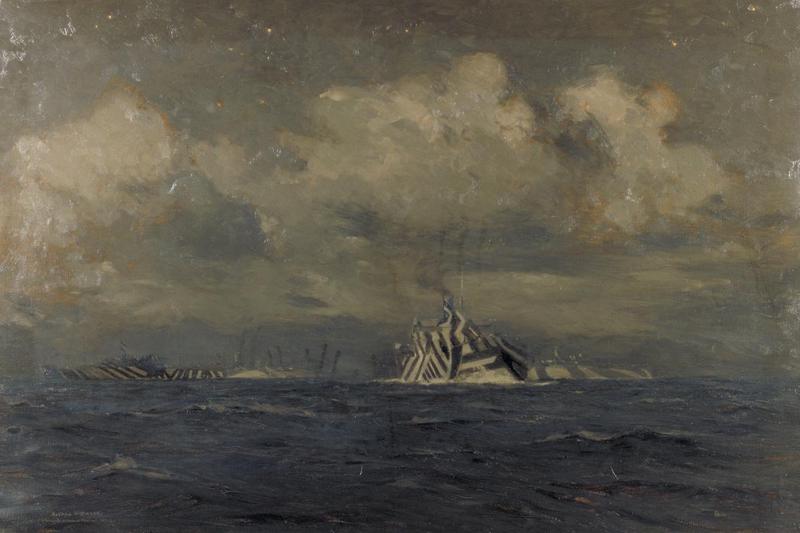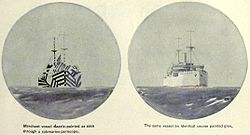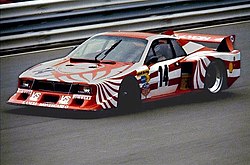'Dazzle-painting' was a form of camouflage, and was particularly effective in moonlight. Wilkinson was responsible for the introduction of the 'dazzle' painted effect. As is evident in this image, the paint des Art.IWMART4029
image: A night scene showing a convoy of 'dazzle' painted ships. There appear to be two vessels in the distance to the left of the composition, and another two in the centre.
http://media.iwm.org.uk/iwm/mediaLib//161/media-161759/large.jpg

|
This photograph Art.IWM ART 4029 comes from the collections of the Imperial War Museums. |
Relevante Bilder
Relevante Artikel
Dazzle camouflageDazzle camouflage, oder dazzle painting, in den USA manchmal razzle dazzle genannt, war eine Gruppe von Methoden, Schiffe zur Täuschung des Gegners anzustreichen. Die Royal Navy und die United States Navy wandten sie besonders im Ersten Weltkrieg sowie in geringerem Umfang im Zweiten Weltkrieg an. Dieser Anstrich bestand aus vielfältigen Mustern geometrischer Formen, die sich in kontrastierenden Farben abwechselten. Die Idee wird dem britischen Marine-Maler Norman Wilkinson zugeschrieben. .. weiterlesen



































